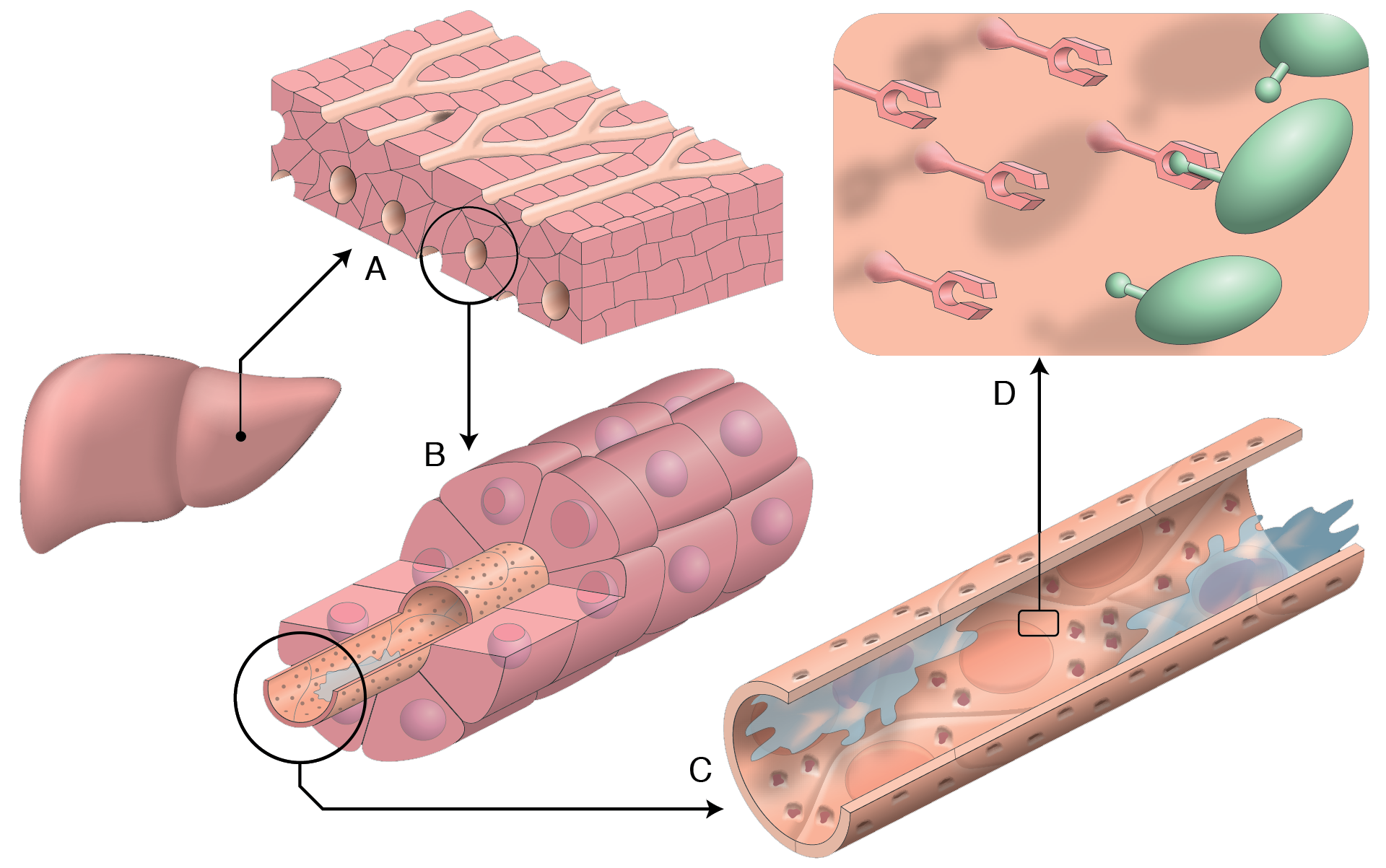Research
I started my research career by the end of the 1970s studying the clearance of nano- and micro particles in the cell type that at the time was regarded the most important scavenger cell clearing such particles from the circulation: the liver macrophage, a.k.a. the Kupffer cell (KC).
My contribution to the field was the detection of the remarkable blood clearance activity of a second type of scavenger cell, namely the liver sinusoidal endothelial cell (LSEC), showing that this cell is the main site of clearance of an array of physiological and foreign waste macromolecules and nano sized substances.
Together the KCs and LSECs make up the scavenger cell apparatus of the liver, which is the most powerful scavenging apparatus of our body, contributing importantly to keep our blood clean (Wikipedia article on the Reticuloendothelial system).
Understanding this is imperative not only to acknowledge how natural waste is cleared from the blood circulation and metabolized; knowledge of the blood clearance activity of these cells is also compulsory to understand how blood borne macromolecular and nano-sized therapeutics are (often unwantedly) eliminated from the circulation.
Animations
Dynamic visualisations of the fate of a compound (green) following intravenous injection (Courtesy from D’Liver AS Tromsø, Norway).
Animation 1: Following intravenous injection, the compound travels rapidly with the blood stream. When it reaches the liver, it binds to receptors expressed on the the liver scavenger cells. The yellow “explosions” depict rapid metabolism of the compound following uptake in the cells.
Animation 2: High magnification showing the inside of a liver sinsoid, exposing the surface of liver scavenger cells, with receptors binding the blood borne compond (green). Shown in this animation is also the internalization of the bound compounds, and the return of empty receptors to the cell surface, enabling new rounds of compound binding and internalization. Metabolism of internalized compound is illustrated by yellow explosions.
Infographic
Below is a representation of liver structure shown at increasing magnifications. (Courtesy from D’Liver AS Tromsø, Norway.)
A: The large parenchymal cells (a.k.a. hepatocytes) are depicted as brick like structures surrounding capillaries (a.k.a. liver sinusoids).
B: At higher magnification the cell nuclei of the hepatocytes can be seen. The lining of a sinusoid is detailed.
C: At even higher magnification a sinusoid is shown, with both types of scavenger cells shown (the liver sinusoidal endothelial cells – LSECs) can be seen to make up the lining of the sinusoid, whereas liver macrophages (a.k.a. Kupffer cells – KCs), colored blue, are located on the LSEC lining. At this high magnification the LSECs can be seen to contain nano sized pores (a.k.a. open fenestrae, about 100 nm in diameter).
D: At this submicroscopic magnification clearance receptors on the LSEC surface are shown. One of the receptors has bound a blood borne compound (green) in order to clear it from the circulation (also clearly shown above, in Animation 2). The next event (not shown here) is rapidl receptor internalization into the LSEC cell body, bringing the bound compound to the interior of the LSEC to be metabolized.
